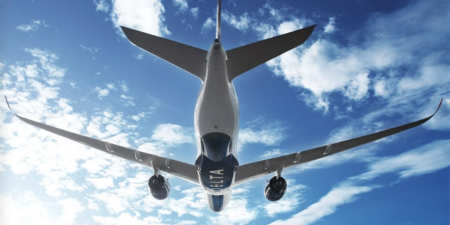Tom from Sydney is flying to New York for a long weekend. He worked late the night before but luckily didn’t take long to pack in the morning before his luggage was whisked from his apartment by drones, security scanned and packed on the plane before Tom even arrived at Sydney Airport. Upon arrival, Tom easily strolls to his gate without queuing thanks to autonomous biometric screening that has automatically processed him through immigration, security, and boarding checks since stepping into the terminal. Seated on the plane, he decides to surprise his New York-based girlfriend with a new coffee machine, ordering it from the airport’s duty-free retail offering, timing its arrival in New York to coincide with his.
Millennials like Tom get a bad rap these days: often dismissed as ‘entitled snowflakes’, glued to their screens and expecting the good life on a silver platter. But what if the maddening habits of millennials are actually paving the way for a better future? This generation’s expectations will be the true disruptors for air travel, resulting in a better journey for all of us to enjoy.
Radical change is forecast
The industry is well aware that airline demand and passenger expectation continues to test airport design in its current format, and this evolution is happening at breakneck speed. At the 2018 Global Passenger Terminal Conference in Stockholm, innovations ranged from seamless 3D facial scanning, self-driving luggage vehicles and biometric bag-drop solutions. Wayfinding robots are already in use in Tokyo Airport and Auckland Airport, providing directions, cleaning, dispensing duty-free goods and language translations. Yet extreme change is on the horizon that will make airports as we know them virtually unrecognisable – if not extinct – and will happen within the life expectancy of current airport masterplans.
What is the most critical asset of an airport? Its runway. If you remove a runway, you remove the fundamental reason for an airport’s existence. This is a distinct future prospect made possible by vertical take-off and landing (VTOL) technology that will see Uber launch flying taxis, expanding on the already available UberChopper at Dubai International Airport.
Quieter planes and point-to-point travel are changing the game. Air travel will become more widely available with less impact as aircraft become smaller, with 30-55 seater planes crafted from light carbon fiber and smarter, fuel-efficient engines potentially enabling pick-ups and drop-offs from building rooftops, parks and open spaces.
Airports are facing demand from Millennials and Gen Z to improve their offering as a seamless, personalized experience between home and holiday. With airport retail outlets facing increased pressure to diversify their offering, the conversation has moved to the limits of duty-free shopping. Why not have an airport where you can purchase any item in the CBD and collect it duty-free at your terminal departure? Why can’t we purchase anything from pet food to Tesla cars at the airport and opt for a home or holiday hotel delivery?
Adapt or die – but do it carefully
While airports across the world are embracing change, it’s critical that current and future innovations are considered in the airport masterplanning process. Airports need to evolve smartly while continuing to expand. The rapid pace of change means it may be impossible to know what the future will look like exactly, but designers and engineers need to keep flexibility top of mind so that innovations can ideally adapt in years to come.
The Airbus A380 is a cautionary tale that springs to mind. At significant cost, airports invested in terminal and airfield infrastructure to house these ‘next generation’ aircraft, and airlines ordered fleets of A380s due to anticipated passenger demand. However, with questions being asked around the A380, and in some quarters their predicted extinction due to low load factors and lack of freight space, the industry has clearly moved in a different direction from what was anticipated. How quickly will airport investments of the future become redundant? Or, are advances going to happen so quickly that investors will just need to learn to stomach the inevitable losses?
Heathrow or Hawaii
What will happen to airports if they do indeed become a relic of the past?
Let’s consider Tom’s sister, Georgia for a moment. Georgia fundamentally disagrees with pollutant carbon emissions produced from air travel yet loves to holiday as much as her brother. She instead chooses to visit the old stomping ground of Heathrow that has now been turned into a commercial hub and tourist destination in its own right. Selecting her preferred experience as ‘island getaway’ upon entry, Georgia pops on a pair of VR sunnies before hurtling down a water slide, swimming in a warm, salty sea, enjoying a custom-made mojito, then revelling in a one-hour shiatsu massage. Georgia enjoys all these treats in the comfort of a VR chair over a few hours, before returning home without a speck of sand irritating her slick, inner city wardrobe.
First Airlines in Japan already offer two-hour virtual experiences where passengers can view the sights of Paris in a purpose-built cabin, an experience that is particularly popular with elderly or mobility-restricted passengers. However, there is much greater potential for different sensory experiences to be included, as evidenced by Disney’s new immersive experience that ‘could ultimately change how theme parks operate’, making airports themselves viable holiday destinations of the future.
The need to travel will certainly never disappear, yet the way we travel, our expectations and customer experiences will fundamentally change over time. Gone will be the days of taxis versus parking, interminable queuing, lousy fast food and sketchy wi-fi. For this, we have to at least in part thank the millennials, whose expectations and demand for a better airport experience are driving these innovations.
This post originally appeared on Aurecon’s Just Imagine blog





